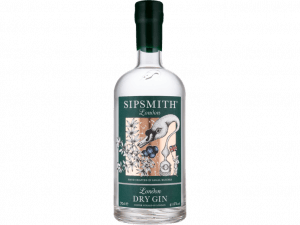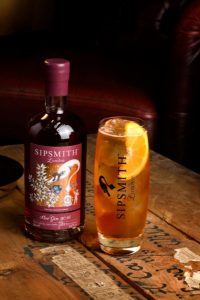Now that we’re in the thick of sloe gin season, you may be tempted to make a batch of your own. To help guide you, we’ve rounded up – and debunked – 10 common sloe gin myths.
As anyone who’s tried to make sloe gin knows, myths around the spirit are pervasive. You may have heard that sloes need to be picked after the first frost, pricked with thorns, or otherwise treated with a certain ritualistic approach.
Given that sloe gin has a long and colourful history, it’s not surprising that the spirit has generated a good deal of lore. But we’re here to straighten out the tall tales. Read on to learn more about 10 common sloe gin myths… and why you should feel free to disregard them when making this season’s batch.
1. SLOE BERRIES CAN ONLY BE PICKED AFTER THE FIRST FROST
Of all the sloe gin myths, this one is the most well known. The thinking is that frost helps sweeten the berries (or typically coincides with when they’re at their ripest), and assists in breaking down their thick skins so their juices better infuse with the gin. It’s true that freezing does help with the latter objective – but in this day and age, it’s much simpler to stow your stash of sloes overnight in the freezer in lieu of obsessively tracking the weather forecast.
2. YOU NEED LOTS OF SUGAR WHEN MAKING SLOE GIN
Sloe berries are famously tart and astringent on their own, and it’s not recommended that they be eaten raw. In response, many tend to load up their sloe gin with sugar to help compensate for the sloe berries’ intensity. While it’s worth adding some sweetener, begin with small additions to taste – the last thing you want is an overly saccharine concoction.
3. SLOE GIN IS ONLY FOR AUTUMN AND WINTER SIPPING
In fact, there’s nothing we love more than a sloe gin cocktail year-round.
Here are some summer-inspired sloe gin recipes to get you started, no matter the season. For example, a minty Sloe-jito will add a ray of warmth to any occasion.

4. USE LOW-QUALITY GIN TO MAKE SLOE GIN
Many sippers who make sloe gin at home assume using a lower quality gin is best. But remember that you’re not masking your gin with sloes: instead, you’re complementing its complexity by adding an additional flavour dimension.
You want a gin with character and a strong juniper backbone. One that can work elegantly alongside the sloes.For that reason, a higher-quality gin is absolutely recommended – like our London Dry Gin.

5. SLOE BERRIES NEED TO BE PRICKED WITH THORNS
This rather romantic myth suggests that sloe berries need to be hand-pricked by thorns – from the blackthorn tree, specifically – before they can be used for sloe gin. It may sound nice, but it simply isn’t necessary (especially when your freezer will accomplish much the same end result).
6. SLOE BERRIES NEED TO BE PRICKED WITH SILVER NEEDLES
See above. It’s not necessary.
7. CITY-DWELLERS CAN’T MAKE SLOE GIN
It’s true that sloe berries can be harder to come across in cities: blackthorn trees are frequently used as hedging in more rural climes, and aren’t as commonly found in metropolitan areas.
But even if you don’t have a blackthorn tree of your very own to forage, never fear: many farmers markets around London will sell sloe berries at this time of year. And if not? There’s always eBay.
If you are really struggling to find your own berries – or are happy to let someone else do the hard work for you – there’s always our eminently sippable Sloe Gin.

8. SLOE GIN SHOULD ONLY CONTAIN SLOE BERRIES, GIN AND SUGAR
Though we certainly appreciate a classic recipe, there are more than a few ways to get creative with your sloe gin. Some add a mix of damsons and sloe berries, while others infuse their gin with cinnamon sticks or vanilla beans. Almonds, which add a lightly nutty character to sloe gin, are another option.
9. ADD SUGAR AT THE START
Many recipes call for a heavy dose of sugar right at the start – but as mentioned in point two, that may well leave you with an overly sweet, syrupy sloe gin (and may prevent extraction of natural fruit sugars and flavours). It’s best to sweeten once your sloes have already finished steeping, and to use simple syrup instead of caster sugar.
10. AFTER THE GIN’S FINISHED STEEPING, BIN THE SLOE BERRIES
Gin-steeped sloe berries deserve to be savoured, not thrown away. Sloe chocolates and sloe preserves are just two (highly tempting) possibilities. Here are some suggestions for using leftover sloe berries in your cooking.
